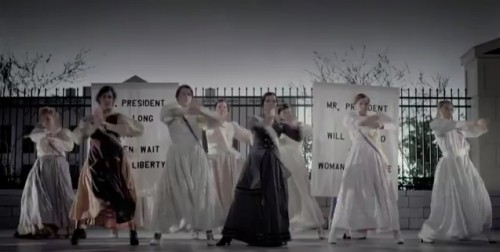Amid accusations of racism, the European Union (EU) has withdrawn a two-minute video designed to raise awareness about “Neighbourhood Policy,” an approach to establishing “deeper relations” with neighboring state the need for unity among EU nations and acceptance of candidate states hoping to enter. In the video, sent to us by Claire P., the EU is personified by a white woman, who is facing attacks from all sides.

Bruno Waterfield, writing for the Telegraph, describes the scene:
First the EU heroine… is menaced by a Chinese Kung Fu master. Then a second threat appears as a urbaned practitioner of Kalaripayattu, a southern Indian martial art, levitates towards her brandishing a scimitar.
As she turns to face the new menace, a third black assailant with dreadlocks cartwheels aggressively towards her before striking a Capoeira pose, the Brazilian martial art.
Here’s screenshots of all of them, but for the full effect, you’ve got to watch (if just for the music and sound effects):



At this point, the woman takes a deep breath, multiples to represent the many states in the EU, and models peaceful behavior that her would-be attackers adopt.
The EU is expressing surprise that a video featuring a peaceful white person and violent, dangerous dark-skinned people might be considered racist. They have released a classic non-apology that privileges intent over impact, denies that the clip was actually racist (it has just been “perceived” so), and identifies the main problem as other people (who got all hypersensitive and “felt offended”):
The clip was absolutely not intended to be racist and we obviously regret that it has been perceived in this way. We apologise to anyone who may have felt offended. Given these controversies, we have decided to stop the campaign immediately and to withdraw the video.
UPDATE: Reader Katrin says the video was about increasing integration and cooperation of states and the European Commission’s enlargement policy, not about the “neighborhood” policy as reported by the Telegraph:,
It was for greater unity of existing EU member states (which is why the video is entitled “Growing Together”) and candidates for membership (which is why it says “the more we are the stronger we are”) in order to show a united front to the rising powers China, India and Brazil. It was intended to portray that if the EU acts united, then China, India and Brazil will be willing to engage with the EU constructively…Current candidates of accession are e.g. Iceland, Macedonia, Montenegro, Turkey and Serbia. Enlargement and unity as a tool for greater power when facing rising economies was the intended message of the clip, not the ENP.
Lisa Wade, PhD is an Associate Professor at Tulane University. She is the author of American Hookup, a book about college sexual culture; a textbook about gender; and a forthcoming introductory text: Terrible Magnificent Sociology. You can follow her on Twitter and Instagram.









